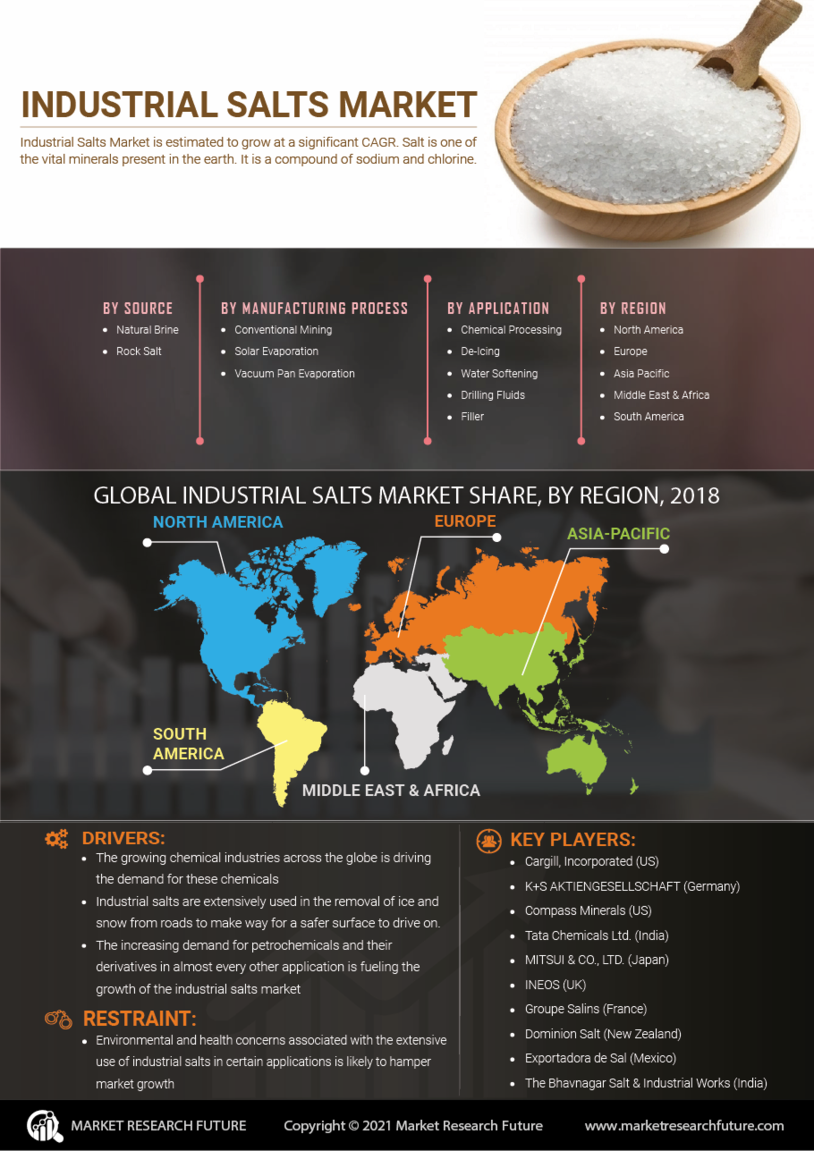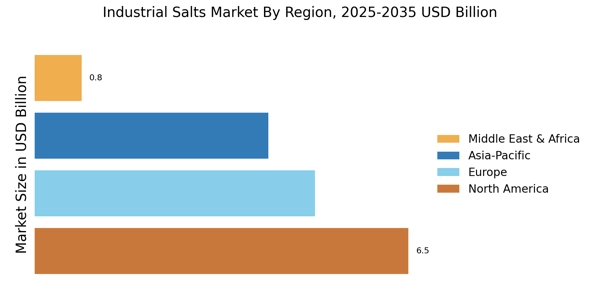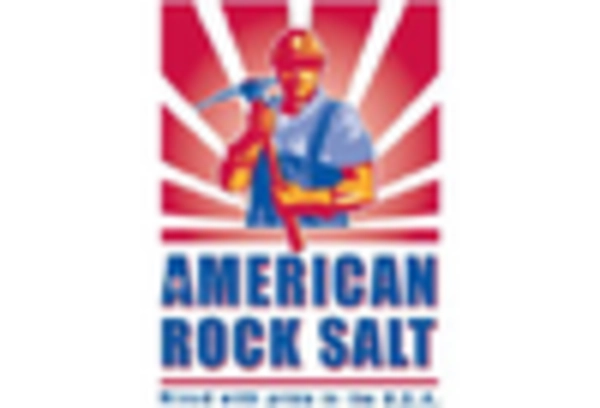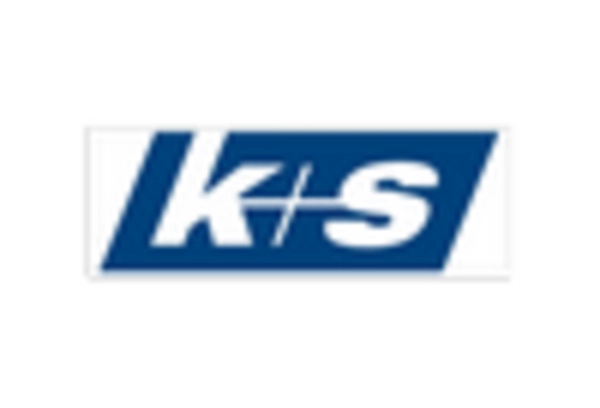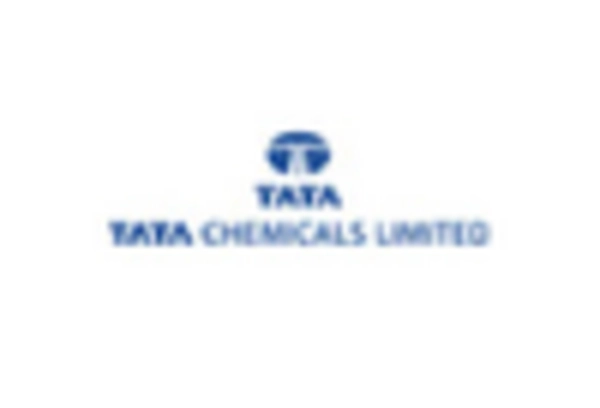Expansion of Food Processing Sector
The Industrial Salts Market is positively impacted by the expansion of the food processing sector, where salts play a vital role in food preservation and flavor enhancement. Sodium chloride, for instance, is widely used in curing meats, preserving fish, and enhancing the taste of various food products. The food processing industry has been experiencing steady growth, with projections indicating a compound annual growth rate of around 4% over the next few years. This growth is likely to drive the demand for industrial salts, as manufacturers seek to maintain product quality and safety. As the food processing sector continues to evolve, the Industrial Salts Market is expected to witness increased consumption of salts for diverse applications.
Emerging Applications in Agriculture
The Industrial Salts Market is witnessing a transformation with the emergence of new applications in agriculture. Salts such as potassium chloride are increasingly utilized as fertilizers, providing essential nutrients for crop growth. The agricultural sector has been evolving, with a growing emphasis on sustainable farming practices and soil health. Recent studies indicate that the use of industrial salts in agriculture could enhance crop yields by improving soil quality. As the global population continues to rise, the demand for food production is expected to increase, potentially driving the agricultural sector's growth by approximately 5% annually. This trend indicates that the Industrial Salts Market may see a significant uptick in demand as agricultural practices evolve.
Growth in Water Treatment Applications
The Industrial Salts Market is significantly influenced by the increasing focus on water treatment solutions. Industrial salts, particularly sodium chloride, are extensively utilized in water softening and desalination processes. With the rising concerns over water quality and availability, industries are investing in advanced water treatment technologies. In recent years, the water treatment sector has shown a growth rate of approximately 5% annually, reflecting the escalating need for effective water purification methods. This growth is likely to propel the demand for industrial salts, as they are integral to achieving desired water quality standards. Consequently, the Industrial Salts Market stands to benefit from the ongoing advancements in water treatment technologies.
Rising Demand in Chemical Manufacturing
The Industrial Salts Market experiences a notable surge in demand due to its critical role in chemical manufacturing processes. Salts such as sodium chloride and potassium chloride serve as essential raw materials in the production of various chemicals, including chlorine and caustic soda. As industries expand their production capacities, the need for industrial salts is likely to increase. In 2023, the chemical manufacturing sector accounted for approximately 30% of the total industrial salts consumption, indicating a robust correlation between chemical production and salt demand. This trend suggests that as chemical industries evolve and innovate, the Industrial Salts Market will continue to thrive, driven by the necessity for high-quality salts in diverse applications.
Increased Focus on De-icing and Anti-icing Solutions
The Industrial Salts Market is experiencing a boost in demand due to the heightened focus on de-icing and anti-icing solutions, particularly in regions prone to severe winter weather. Sodium chloride is the most commonly used de-icing agent, effectively melting ice on roads and highways. With the increasing frequency of extreme weather events, municipalities and transportation authorities are investing in effective de-icing strategies to ensure public safety. The de-icing market has shown a growth trajectory of approximately 6% annually, indicating a robust demand for industrial salts. This trend suggests that the Industrial Salts Market will continue to benefit from the ongoing need for reliable de-icing solutions in various geographical areas.
